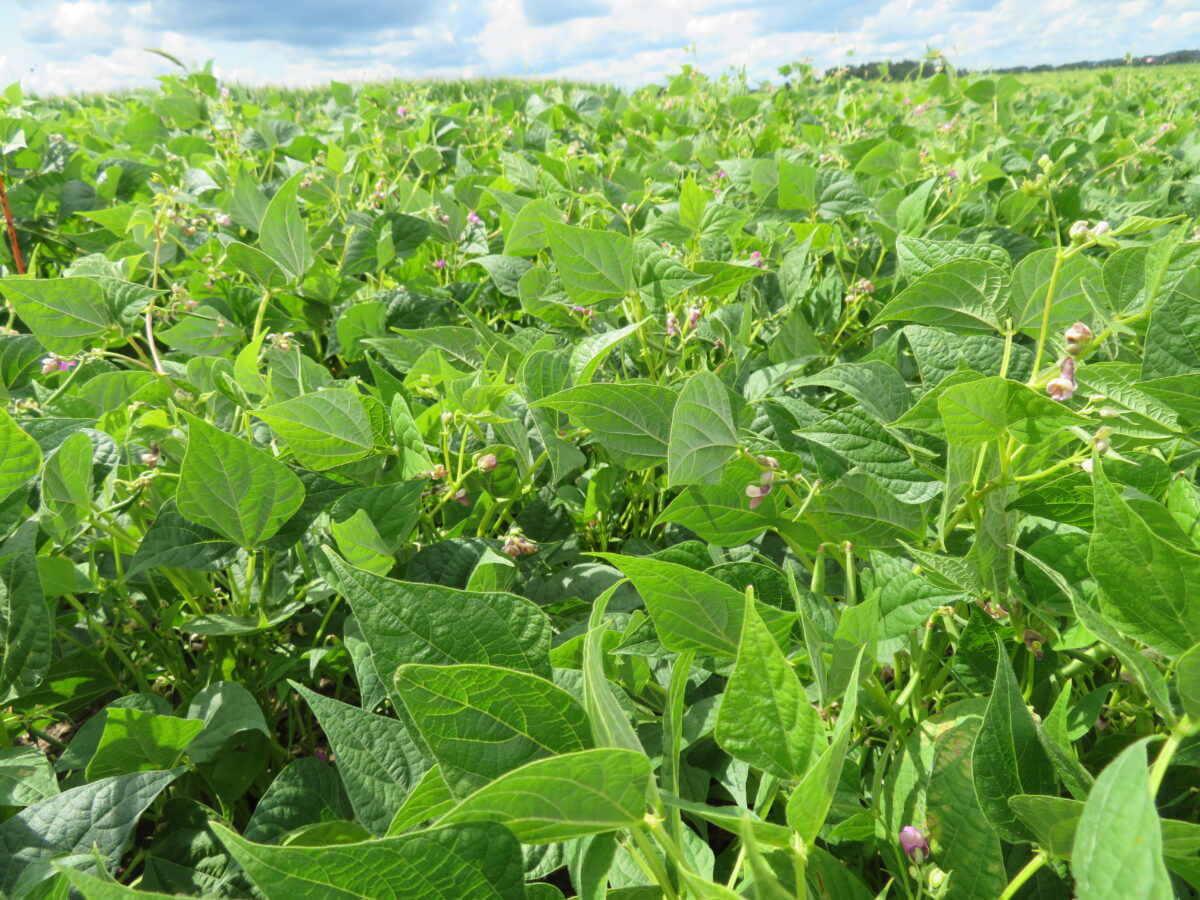Although dry edible beans are legumes, they do not obtain their full nitrogen requirement through nitrogen fixation. Studies have not shown a yield benefit to inoculation with rhizobia. Ontario nitrogen research has demonstrated yield increases in some years but has not shown an economic response to pre-plant incorporated or banded nitrogen. Nitrogen applied pre-flower does not increase yield. Other jurisdictions (Manitoba, Michigan, Wyoming, North Dakota) have shown an economic yield response to pre-plant nitrogen and suggest between 18–36 kg N/ha (40–80 lb N/acre). Where phosphate fertilizers are banded, a small amount of nitrogen (10 kg/ha or 9 lb/acre) may improve the availability of the phosphate.
It is important to consider cropping history, soil organic matter levels, and manure application history in making a decision on applying additional nitrogen fertilizer. Nitrogen may not be required where beans follow a crop that received a high amount of nitrogen, where manure is applied or where the previous crop was a legume.
Nitrogen stimulates plant and root growth. This can be helpful when bean growth is slow due to environmental stresses or root rot. Where edible bean yields have traditionally been low due to bronzing or root rots, apply up to 100 kg/ha (90 lb/acre) of nitrogen before planting. Under these conditions, nitrogen will increase yield but will not cure bronzing or root rots. Applying nitrogen can increase plant height, which is helpful in narrow-row bean harvest or for beans grown on heavy clay soils. Nitrogen can increase the risk and severity of white mould because of increased vegetation.
Experiments were conducted by Chris Gillard, University of Guelph, at the Huron Research Station (near Exeter ON) from 2008 to 2010 to measure plant growth and yield responses for navy, kidney, and cranberry dry bean market classes (cv. T9905, Pink Panther, and Etna, respectively) to nitrogen fertilizer rates of 0, 35, 70, 105, 140 and 175 kg N ha-1. Plant measurements taken included plant emergence, vigour, height and maturity, plant and seed mass, and grain moisture and yield. Over three years, plant growth and yield responses to nitrogen fertilizer were limited. Plant emergence and vigour either improved or were not affected N rate, while increasing N rates increased plant height of only Pink Panther in 2008. Plant mass was unaffected nitrogen. Nitrogen fertilizer improved the grain yield of Etna, with the highest yields occurring with 70 kg N ha-1 or more, while other cultivar site-years did not respond. Overall, these results demonstrate dry beans rarely respond to nitrogen fertilizer at the Huron Research Station. Additional testing over multiple years and locations would assist in predicting these responses.
